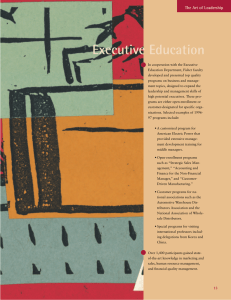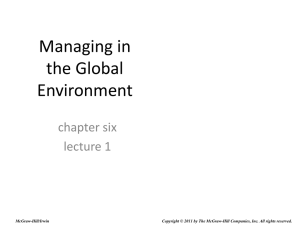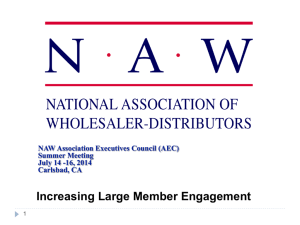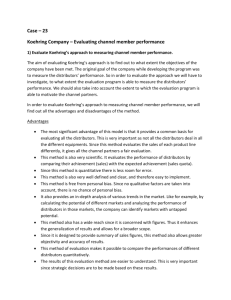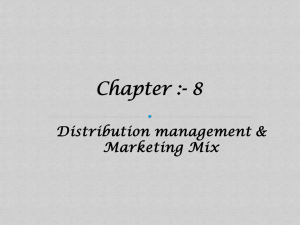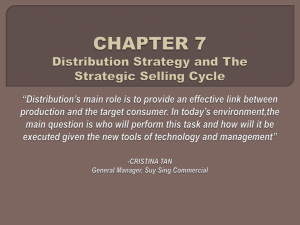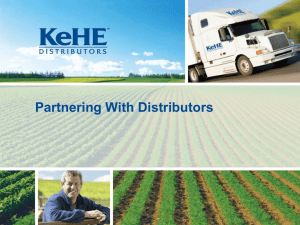Angela Gloy, Extension Associate FarmNet/FarmLink, Cornell University
advertisement
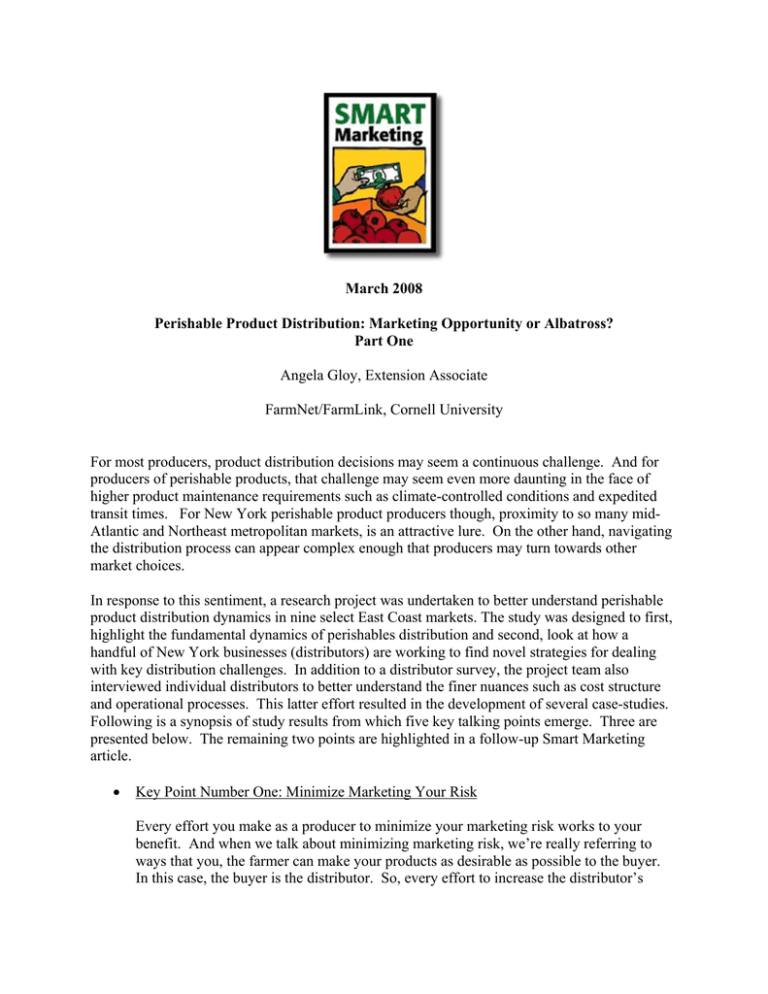
March 2008 Perishable Product Distribution: Marketing Opportunity or Albatross? Part One Angela Gloy, Extension Associate FarmNet/FarmLink, Cornell University For most producers, product distribution decisions may seem a continuous challenge. And for producers of perishable products, that challenge may seem even more daunting in the face of higher product maintenance requirements such as climate-controlled conditions and expedited transit times. For New York perishable product producers though, proximity to so many midAtlantic and Northeast metropolitan markets, is an attractive lure. On the other hand, navigating the distribution process can appear complex enough that producers may turn towards other market choices. In response to this sentiment, a research project was undertaken to better understand perishable product distribution dynamics in nine select East Coast markets. The study was designed to first, highlight the fundamental dynamics of perishables distribution and second, look at how a handful of New York businesses (distributors) are working to find novel strategies for dealing with key distribution challenges. In addition to a distributor survey, the project team also interviewed individual distributors to better understand the finer nuances such as cost structure and operational processes. This latter effort resulted in the development of several case-studies. Following is a synopsis of study results from which five key talking points emerge. Three are presented below. The remaining two points are highlighted in a follow-up Smart Marketing article. • Key Point Number One: Minimize Marketing Your Risk Every effort you make as a producer to minimize your marketing risk works to your benefit. And when we talk about minimizing marketing risk, we’re really referring to ways that you, the farmer can make your products as desirable as possible to the buyer. In this case, the buyer is the distributor. So, every effort to increase the distributor’s interest in buying your product(s) is essentially a step towards minimizing your marketing risk. For example, producers that (1) offer high quality product and (2) are consistent and reliable in communicating information about product volume and quality, product traceability records, necessary product packaging, up-to-date post-harvest handling practices, and customer service greatly enhance buyer appeal because this data better helps them market product more efficiently in turn. For farmers wanting to use shippers of perishable product, finding a buyer in advance is a necessity. If working with a distributor however, the farmer’s interest in helping to identify potential future buyers demonstrates farmer interest in finding a win-win marketing situation. One of the side benefits may be that the farmer receives a discounted shipping rate for having assisted in finding the next buyer down the line. In general, distributors appreciate the producer who is familiar with both production and marketing costs, conveying a sense of marketing savvy at the negotiation table. • Key Point Number Two: Sleuth out the Distributor Distributors surveyed indicate that they rely on farmer-initiated calls and word-of-mouth promotion almost to the same extent, 75% and 72% respectively, to identify new suppliers of perishable product. Though time-consuming, farmers can yield positive benefits from taking the time to call potential distributors. It also suggests that making yourself as distributor-friendly a farmer as possible (by providing high quality product and informing the distributor about your product volume, quantity, and harvest schedule), that you increase the chances of those you’re already working with passing along a positive referral. In terms of local distribution opportunities, the feedback suggests that there are smaller, local shippers/distributors with whom many farmers may not be familiar since these shippers may not advertise in the national directories. Keep in mind also that this group may not have a traditional distributor/shipper profile. The FoodLink program (Rochester, NY) is one example of a non-traditional shipper. They are a food bank that happens to offer economical shipping rates to subsidize their already-existing fleet of trucks. • Key Point Number Three: Distribution is a Symbiotic Relationship It is tempting to look suspiciously upon a distributor’s rates, especially as one stands at the edge of the farm gate. There are two points worth noting however. First, supplying larger, more distant markets is more expensive. Additional expense is incurred for obvious reasons like longer transit times and increased fuel usage to get to the market. But buyers in larger, metropolitan markets may also impose more demanding specifications on the distributor in terms of number of deliveries, product volume, and packaging specifications, all of which will increase the cost to the distributor. The hope is that the retail price will also increase by more than the increase in marketing costs for the benefit of farmer, distributor, and retailer. In short, farmers that are well-versed in all marketing costs are better able to evaluate the trade-offs of supplying different market types. Second, distributors need suppliers too. Not only do they need product, but they are always looking to keep trucks at full capacity to lower the fixed cost per delivery. Survey feedback indicates that 70% of distributors use contracted trucking services to supplement their own fleet which translates to a large numbers of trucks with available cargo space on the road. And finally, despite anecdotal evidence from producers, the respondent distributors indicate overwhelmingly that they do not impose minimum volume requirements. Of the small group that do, most noted that their volume requirements vary by product or that they work with pallet-increments. Especially for smaller volume, higher-value perishable product, this is encouraging. But really, the only way to verify is to come full circle and contact individual distributors till you find a good business fit. In conclusion, the project team found that distributors are equally as anxious to identify solutions to the distribution challenge as are producers. Despite the full-time effort that is allocated to production alone, making yourself more market-savvy is a critical investment. The enormity of your production effort is compromised if you can’t effectively market your product. Second, distributors still rely heavily on farmer-initiated contact. Without question, this involves greater time commitment than if distributors called you. On the other hand, distributors note that they also depend heavily on word-of-mouth referrals. To the extent that you worked hard up front on production and early marketing efforts, word of mouth referrals are actually a return on earlier effort investment. Third, for a variety of reasons, distributors need farmers as much as farmers need distributors. The challenge lies in both parties finding a good economic fit. Next in Smart Marketing: Key factors Contributing to New York’s Competitiveness in Perishable Products “Smart Marketing” is a marketing newsletter for extension publication in local newsletters and for placement in local media. It reviews elements critical to successful marketing in the food and agricultural industry. Please cite or acknowledge when using this material.
